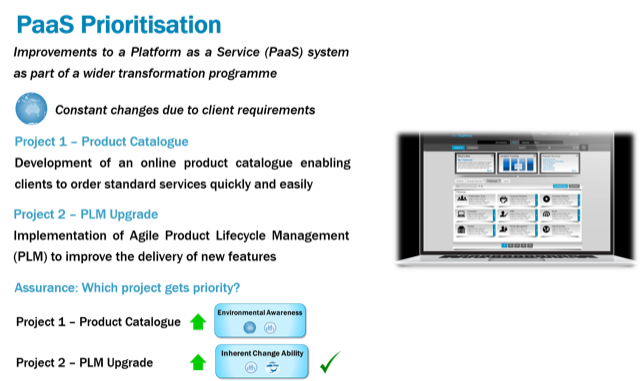The Problem
Programmes attempting to undertake complex transformation often spiral out of control and overwhelm the delivery teams resulting in overspend, late delivery and failure to realise the expected benefits. A number of excellent programme management frameworks have been developed which provide valuable guidance on how to deliver programmes. Some programme and business leaders rely heavily on these frameworks; therefore, insisting on strict adherence to the chosen methodology. However, such an approach inevitably leads to a loss of organisational flexibility and the ability to react quickly to changing environments.
Organisations often get lost in the intricacies of applying the chosen programme methodology and lose sight of the ultimate goal i.e. achieving the desired benefits.
A simple solution
When working on a complex programme it is a good idea to regularly take a step back to look at the programme from a point of view outside the methodology and just ask yourself “Does this all really make sense?” Some would refer to this as taking the common sense approach. In this article, I will explain how First Principle Thinking can be used to apply a common sense approach to programme assurance regardless of what methodology is employed.
Background
A transformation programme can be used to implement new strategies by aligning people, processes and technology. If the transformation is successful the business will operate in a new state which produces the expected benefits. It is worth noting that most modern businesses need to exist in a flexible form so that they can quickly change in reaction to volatile environments or to take advantage of new opportunities.
What is Business Transformation?
Process of making fundamental changes to how a business operates in order to achieve strategic objectives.
What is a Programme?
“A group of related projects managed in a coordinated way to obtain benefits and control not available from managing them individually.” – PMI
What is First Principle Thinking?
Involves breaking down a problem into its fundamental facts and attempting to solve it from that viewpoint. It is mostly used in engineering by redefining complex challenges from the fundamental laws of physics.
First Principles of Transformation
Fundamentals
Applying first principle thinking we can simply define a transformation programme as:
The process of evolution from one business state to another with the objective of achieving certain benefits.
Therefore the fundamental principle for delivering a transformation programme is:
Origin + Transformation = Outcome + Benefits
The Transformation Journey

In life, we naturally value the journey over the destination. However, in programme assurance, all value is placed on realising the benefits efficiently.
This can be illustrated with a story about a family travelling search for fruit in a changing world and considering the many things the family would need in order to succeed. These same considerations can be applied to an organisation (family) using change (transport) to try and deliver business benefits (fruit) while taking into account the environment (world) they operate in.
Looking at this problem from first principles highlights that there are two fundamental elements which determine the chances of success:
1. The inherent ability of the organisation to change i.e. the family’s transport and if they can work together to use it.
2. The organisation’s understanding of their business environment i.e. the family’s knowledge of how their world will change and their ability to determine the shortest path to the juicy fruit.
Involves breaking down a problem into its fundamental facts and attempting to solve it from that viewpoint. It is mostly used in engineering by redefining complex challenges from the fundamental laws of physics.
Application Example
Prioritisation of Platform as a Service (PaaS) Improvements
A PaaS is used by clients to manage their networks. There are always new requirements for APIs, new products and upgrades. A standard product catalogue will clarify options available and bring a level of certainty and standardisation. Agile Product Lifecycle Management (PLM) would enable developers to react more quickly to changes
First Principle Assurance Outcome
Target clients require bespoke solutions and therefore the business needs to be able to react to this evolving environment. Project 1 would increase environmental awareness by fixing the product offering but it would also reduce the change ability and make the organisation less competitive. Therefore Project 2 is selected to increase the change ability and make the business more agile.
Involves breaking down a problem into its fundamental facts and attempting to solve it from that viewpoint. It is mostly used in engineering by redefining complex challenges from the fundamental laws of physics.
Conclusion
First Principle Thinking for Transformation Assurance:
• Presents a concept to help programme management teams maintain alignment to the vision.
• Starts by breaking down a transformation programme into its fundamental truths i.e. Origin + Transformation = Outcome + Benefits.
• Viewing the programme as a journey uncovers two fundamental characteristics required for the transformation process – The ability to change and understanding of the environment.
• Organisations can continuously confirm assurance by using the Transformation Journey analogy to assess if the programme’s specific projects and initiatives align with business needs and environment.
At Proaptus we understand that change is constant. Our tailored solutions are specifically designed to enhance the ability of your business to adapt. Contact us now to find out how we can help you to transform your business, and unearth its full potential.
